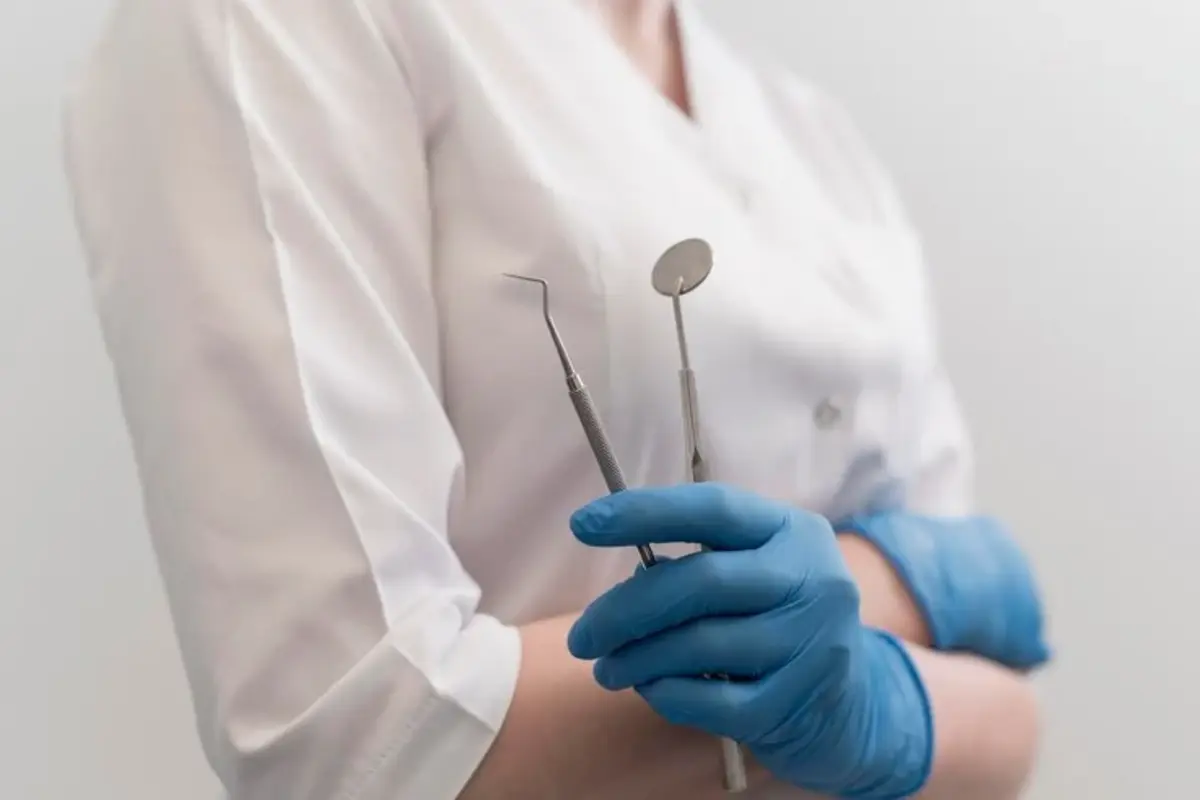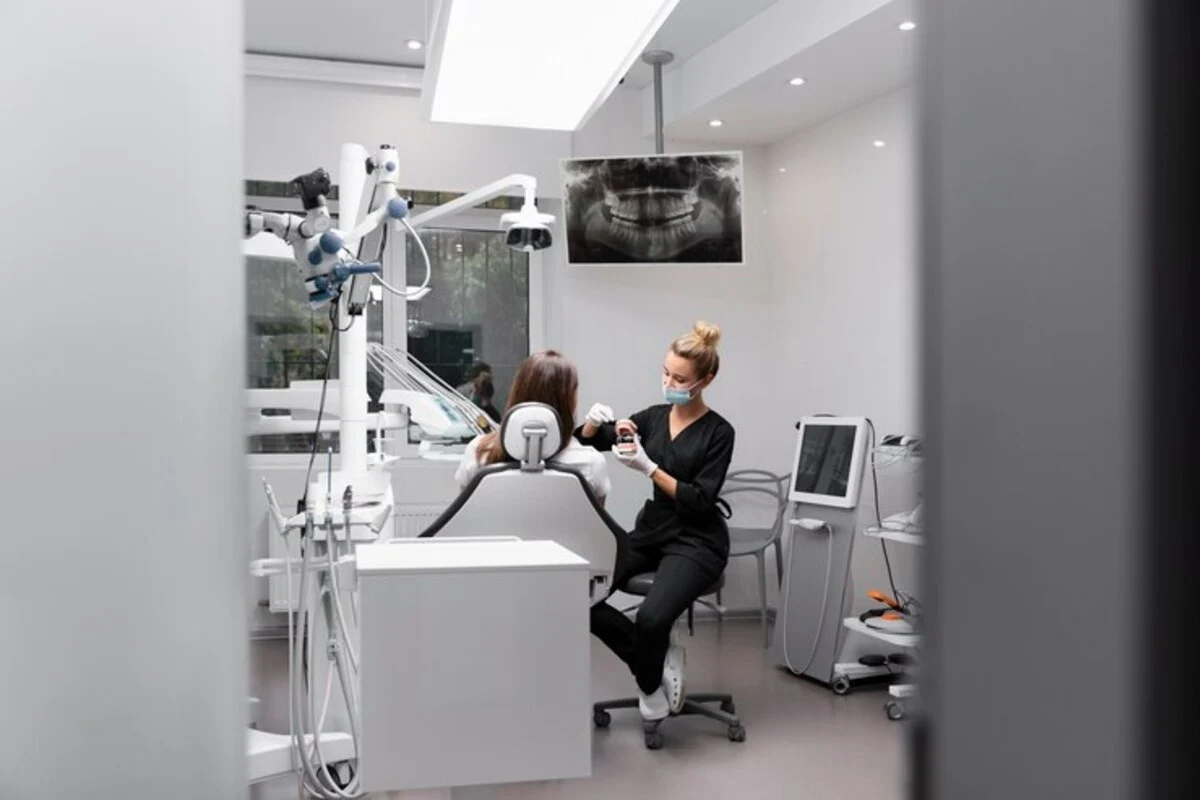Minimally Invasive Dentistry (MID) marks a paradigm shift in dental care, championing the preservation of as much of the natural tooth structure as possible. This approach is built on the principle of “a systematic respect for the original tissue,” recognizing that preserving natural tooth tissue is fundamentally preferable to any artificial replacement.
MID encompasses a wide range of dental practices, aiming to prevent dental diseases before they start, intercept their progression early, and when intervention is necessary, to do so with the minimal tissue loss. Be with Fortune smiles dental clinic to have special information about MID.
Introduction to Minimally Invasive Dentistry
Techniques such as Atraumatic Restorative Treatment (ART) and resin infiltration epitomize the essence of MID. ART is particularly useful for managing deep caries lesions close to the pulp or in patients where compliance with traditional methods is challenging, such as children.
This technique involves the selective removal of necrotic tissue, leaving behind a layer of carious dentine that can potentially remineralize, thereby reducing the microbial load without compromising the tooth’s vitality.
Resin infiltration, on the other hand, addresses early carious lesions and white spot lesions by penetrating the enamel and creating a barrier that prevents further demineralization and stabilizes the lesion.
MID is not just about the conservative treatment of caries. It encompasses a holistic approach to dental care that includes the early detection of caries, the use of advanced diagnostic tools, and the application of preventive measures such as high fluoride varnishes and sealants.
The goal is to maintain the health of the tooth structure, prevent the initiation of a “restorative spiral,” and ultimately preserve the patient’s natural dentition for as long as possible.
The adoption of MID principles represents a significant departure from traditional dental practices that often favored more invasive restorative procedures.
By focusing on disease prevention and minimally invasive interventions, dental professionals can significantly enhance patient outcomes, reduce treatment-related discomfort, and promote the long-term health of the oral cavity.
This introduction sets the stage for a deeper exploration of the benefits, comparison with traditional procedures, and patient outcomes associated with minimally invasive dentistry in the following sections.
Benefits of Minimally Invasive Treatments
Minimally invasive dentistry (MID) has ushered in a new era of dental care, fundamentally altering the treatment landscape.
The benefits of MID extend beyond the mere reduction of tissue removal, impacting patient comfort, treatment outcomes, and the overall approach to dental health. This section delves into the multifaceted advantages of minimally invasive treatments, underpinned by evidence-based practices and technological advancements.
Preservation of Natural Tooth Structure
The cornerstone of MID is the preservation of natural tooth tissue. By employing techniques like resin infiltration and atraumatic restorative treatment (ART), MID minimizes the removal of healthy tooth material.

This approach not only respects the integrity of the natural dentition but also reduces the risk of future structural complications.
Enhanced Patient Comfort and Reduced Anxiety
Minimally invasive procedures are generally less daunting for patients, particularly those with dental anxieties. Techniques such as sono-abrasion and the use of glass ionomer cements (GIC) for restorations minimize discomfort and can often be performed without the need for local anesthesia.
This patient-centered approach can significantly improve the dental care experience, encouraging regular visits and compliance with treatment plans.
Improved Aesthetic Outcomes
MID techniques frequently offer superior aesthetic results, especially in the management of early carious lesions and white spot lesions. Resin infiltration, for example, not only halts the demineralization process but also enhances the appearance of the teeth by blending early caries lesions with the natural tooth color.
This aspect of MID is particularly appealing to patients seeking not only health-related outcomes but also cosmetic improvements.
Reduction in Treatment Time and Costs
By focusing on early detection and intervention, MID can significantly reduce the need for more extensive, time-consuming, and costly treatments. Techniques like resin infiltration allow for quick and effective treatment of early lesions, avoiding the progression to stages that require complex restorations.
Moreover, the durability of minimally invasive restorations and the reduced need for future interventions contribute to overall cost savings for patients over time.
Decreased Risk of Post-Treatment Complications
Traditional restorative methods often involve more extensive tooth preparation, which can lead to post-treatment sensitivity, discomfort, and, in some cases, the need for further interventions. In contrast, MID’s conservative approach lessens these risks, promoting a quicker recovery and enhancing patient satisfaction.
Advances in Dental Implant Materials
Long-Term Oral Health Benefits
Perhaps the most significant advantage of MID is its focus on long-term oral health outcomes. By emphasizing prevention, early intervention, and the preservation of natural tooth structure, MID supports the sustainability of the oral ecosystem. Techniques that encourage remineralization and use materials compatible with the biological environment contribute to healthier, more resilient teeth.
In summary, the benefits of minimally invasive dentistry are profound and far-reaching. Through the preservation of tooth structure, enhanced patient comfort, superior aesthetic outcomes, reduced treatment times and costs, minimized risk of complications, and a focus on long-term oral health, MID represents a modern, evidence-based approach to dental care.
These advantages align with the evolving needs and expectations of patients, ensuring that MID continues to gain traction as a preferred method of dental treatment.
Comparison with Traditional Dental Procedures
The evolution of dentistry has been marked by significant advancements in both technology and understanding of oral health, leading to a divergence between minimally invasive dentistry (MID) and traditional dental procedures. This comparison elucidates the distinctions between these approaches, highlighting the advantages of MID in terms of technique, patient experience, and health outcomes.
Technique and Approach
Traditional dental procedures often involve extensive tooth preparation to remove decay and restore the tooth with fillings, crowns, or other restorative materials. This can result in the removal of a significant amount of healthy tooth structure alongside the decayed areas.
Advances in Dental Implant Techniques
In contrast, MID focuses on preserving as much natural tooth structure as possible, using advanced diagnostic tools for early detection and employing techniques such as resin infiltration and atraumatic restorative treatment (ART) that minimize tissue removal.
Technology and Materials
MID leverages the latest in dental materials and technology to achieve its goals. Materials like glass ionomer cements (GIC) and resin composites that mimic the natural properties of tooth enamel are commonly used.
These materials not only provide excellent aesthetic results but also contribute to the structural integrity of the tooth. Additionally, MID employs technologies such as air abrasion, laser dentistry, and sono-abrasion to treat teeth with minimal invasiveness and maximum precision.
Patient Experience
The patient experience significantly differs between MID and traditional methods. MID procedures are typically less invasive, causing less discomfort and requiring shorter recovery times. This approach can reduce patient anxiety and improve compliance with treatment and preventive care plans.
Traditional methods, due to their invasive nature, often require more extensive use of anesthesia and can result in longer recovery periods and post-treatment sensitivity.
Outcomes and Longevity
MID aims not only to treat current dental issues but also to prevent future problems, thereby enhancing the long-term health and functionality of the oral environment. By preserving natural tooth structure and using materials that support the tooth’s ability to remineralize, MID can lead to more durable and long-lasting results.

Traditional dental restorations, while effective, may compromise the tooth’s structural integrity over time, leading to a cycle of replacement and repair.
Cost-effectiveness
While the initial cost of some MID procedures may be comparable to traditional treatments, the focus on prevention, early intervention, and preservation of natural tooth structure in MID can result in lower long-term costs for patients. By avoiding the need for more extensive interventions in the future, MID represents a cost-effective approach to dental care.
Biomimetic Dentistry California
Preventive Focus: Perhaps the most distinguishing feature of MID compared to traditional dentistry is its preventive focus. MID emphasizes the importance of early detection and intervention, utilizing diagnostic tools and risk assessment to tailor preventive and treatment plans to individual patient needs.
This proactive approach contrasts with the more reactive nature of traditional dentistry, which often addresses problems after they have become more advanced.
In conclusion, the comparison between minimally invasive dentistry and traditional dental procedures highlights the benefits of adopting a more conservative, patient-centered approach to dental care. MID offers advantages in terms of technique, patient experience, outcomes, cost-effectiveness, and a preventive focus.
As the dental profession continues to evolve, the principles of MID are likely to become increasingly integrated into standard practice, reflecting a broader shift towards more sustainable and holistic approaches to healthcare.
Patient Outcomes and Success Stories
Minimally invasive dentistry (MID) has not only transformed dental treatment approaches but also significantly enhanced patient outcomes and satisfaction. This section presents an overview of the positive impacts MID has on patients, illustrated through success stories and supported by clinical evidence.
Enhanced Patient Satisfaction
One of the most immediate outcomes of MID is the increased level of patient satisfaction. Patients often report less anxiety and fear associated with dental visits, thanks to the less invasive nature of MID procedures.
Techniques such as sono-abrasion, resin infiltration, and the use of glass ionomer cements (GIC) for restorations are known to cause minimal discomfort, making the dental experience more pleasant and less daunting for patients.
Successful Management of Early Caries Lesions
MID’s emphasis on early detection and intervention has led to numerous success stories in the management of early caries lesions. Resin infiltration, in particular, has shown remarkable efficacy in arresting the progression of early caries and even reversing the demineralization process.
Patients benefit from not only the halt in decay but also an improvement in the aesthetic appearance of their teeth, as this technique blends the lesions with the natural tooth color.
Prevention of Further Dental Issues
By focusing on preserving natural tooth structure and employing preventive measures, MID helps in reducing the risk of future dental problems. Success stories abound where patients have avoided the need for more extensive, costly, and invasive treatments through early and minimal interventions.
The preventive approach of MID, including the application of sealants and the use of fluoride varnish, has proven effective in maintaining oral health and preventing decay.
Long-Term Oral Health Benefits
The long-term benefits of MID for patients are significant. By preserving as much of the natural tooth structure as possible and using materials that support the tooth’s natural repair processes, MID contributes to the overall strength and health of the oral environment.
Patients treated with MID principles tend to have fewer dental complications over time, demonstrating the effectiveness of this approach in promoting long-term oral health.
Success Stories from High-Risk Patients
High-risk patients, including those with a history of multiple caries or other dental issues, have particularly benefited from MID. Through tailored treatment plans that focus on risk assessment, preventive care, and minimally invasive interventions, many high-risk patients have seen a dramatic improvement in their oral health status.
These success stories highlight the adaptability and patient-centered nature of MID, offering hope and improved outcomes for those most in need of careful dental management.
Improved Quality of Life
Beyond the technical successes, MID has a profound impact on patients’ quality of life. By reducing pain, recovery time, and the stress associated with dental treatments, MID enhances patients’ overall well-being. The confidence that comes from having a healthy, aesthetically pleasing smile cannot be underestimated.
Many patients report increased self-esteem and satisfaction with their dental appearance, further testament to the success of MID approaches.
In conclusion, the success stories and positive outcomes associated with minimally invasive dentistry underscore its importance and efficacy in modern dental care. From enhanced patient satisfaction to the successful management of early caries lesions, prevention of further dental issues, long-term oral health benefits, improved outcomes for high-risk patients, and an overall improved quality of life, MID has proven to be a beneficial approach for patients and dental professionals alike.
Biomimetic Materials Transform Dental Restoration
As MID continues to evolve with advancements in technology and materials, its role in promoting sustainable, patient-centered dental care is set to further expand, offering a brighter, healthier future for dental patients around the world.
This comprehensive exploration of minimally invasive dentistry, from its foundational principles and benefits to its comparison with traditional methods and its positive impact on patient outcomes, offers a deep dive into why MID is increasingly becoming the preferred approach in dental care.
Through a blend of technical innovation, a focus on prevention, and a commitment to preserving natural tooth integrity, MID represents a significant step forward in achieving optimal oral health and patient satisfaction.

